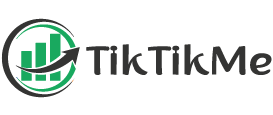If you are looking to start a new business then you should know the basics of accounting principles. Accounting is the process of manage or recording financial transactions. It plays an important role in business and helps to track income and expenditures, ensure statutory compliance, and provide investors management and government with quantitative financial information which may be used to make in business decision.
Accounting is the most important language of business, Hence every entrepreneur, manager, executive, and students need to understand the basics of accounting.
There are some basic accounting terms that will learn such as expenses, assets, liabilities, revenues and income statement, balance sheet and statement of the cash flows. That will become familiar with accounting debits and credits. Here we have also mentioned the basics knowledge of accounting that people should know everything related to their account and record the business transactions.
How to Record the Business Transaction
You have to record the business transaction by these following methods:-
Financial Statements
The financial statement shows the categorized transactions that came about at a factor in time. The first example for learning purposes is the financial statements. Hence we are going to speak about three monetary statements.
1. Income statement
This statement is also a financial statement. In this statement you have to give the statements that are used for reporting a company’s financial performance to the selected accounting period, with the alternative two states such as stability sheet and cash flows. It also knows the profit and loss declaration.
- Income
Sales-: You sold different types of products and service to B2C and B2B customers. And it can expect to pay a known price.
Tax income-: If your business was not running well and your earnings before taxes are negative. Then, the tax authority will give you a type of tax income so, you pay less income tax in the future. This tax is the most advance income types.
Expense
Purchases-: Delivered some goods and services from other businesses.
Employees-: People who work for you
Depreciation-: Price of goods used for multiple periods distributed over the periods.
Interests-: Your business with bank debt and need to pay interest.
Tax expenses-: If you are earning before tax is positive, then you will need to pay income taxes to the tax authorities.
2. Balance sheet
This statement is the financial position of a business. It also gave details of many previous years. So, back to back comparison of two consecutive years. The data will help you to track your performance.
Fixed assets-: In these assets, goods and service is fixed.
Trade receivables-: The value of tax added
Vat assets -: The value of assets that is part of the goods and services that are purchased.
Inventory-: Net remaining volume of raw materials.
Cash-: How much cash you have in the bank.
3. Cash flow statements
Cash flow statement is a financial statement which offers aggregate data regarding all cash statement. It also includes cash outflows that pay for business activities and investments during a given period of time.
This cash flow statement is used to change in cash from one period to the next period. It consists of the following parts:
Operating cash flow-: This type of cash flow shows the cash inflow and outflow related to your operative business. There are two methods to calculate the operating cash flow such as direct method and indirect method.
Indirect method-: This type of method starts with the net income and adds the non-cash charges from the income statement. Then you added the change in each balance sheet account from the last period.
Direct method-: In this method is related to cash payment to the assets and liabilities on the balance sheet into the form of cash and received from customers such as cash paid to employees, cash paid to suppliers, cash paid to tax authorities.
Investing cash flow-: This type of cash flow shows how much cash invested into fixed assets.
Financing cash flow-: This cash flow explains how much cash was received and paid to investors such as debt and equity investors.
Conclusion
You should have all the information on the context in which the account is set. You should also aware that accounting is the process of recording and processing data into information on the characteristics of good information and of the relationship between organizational and accounting objectives.







